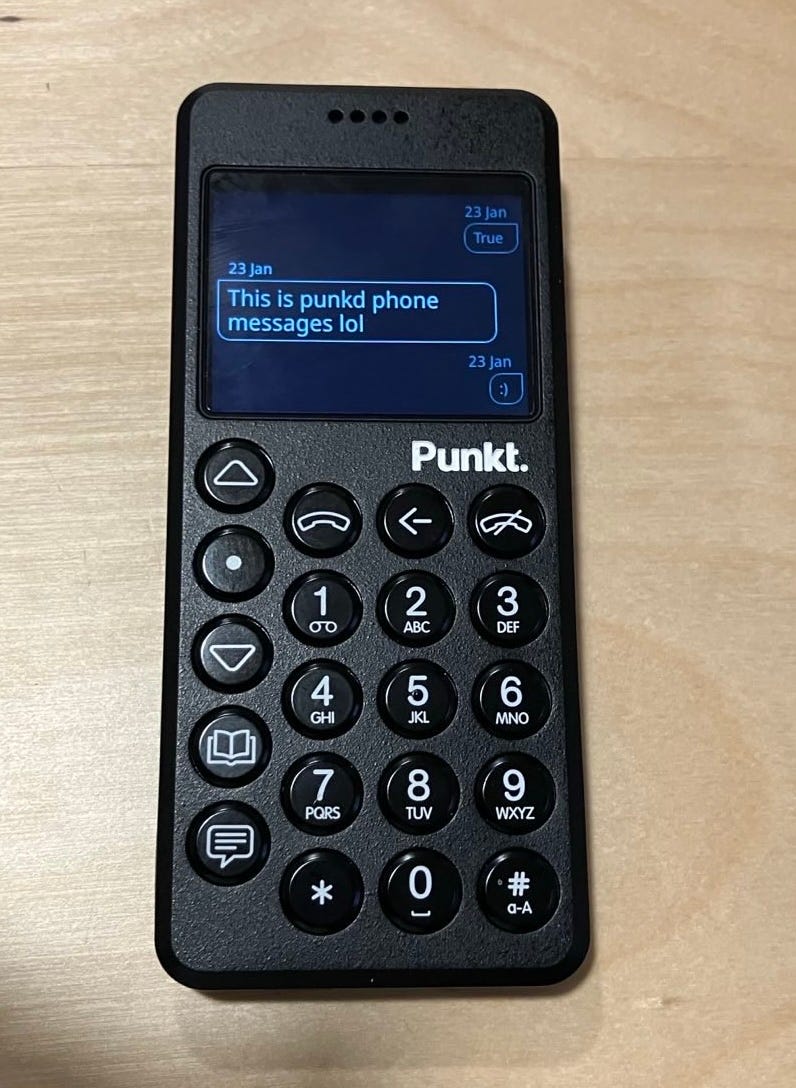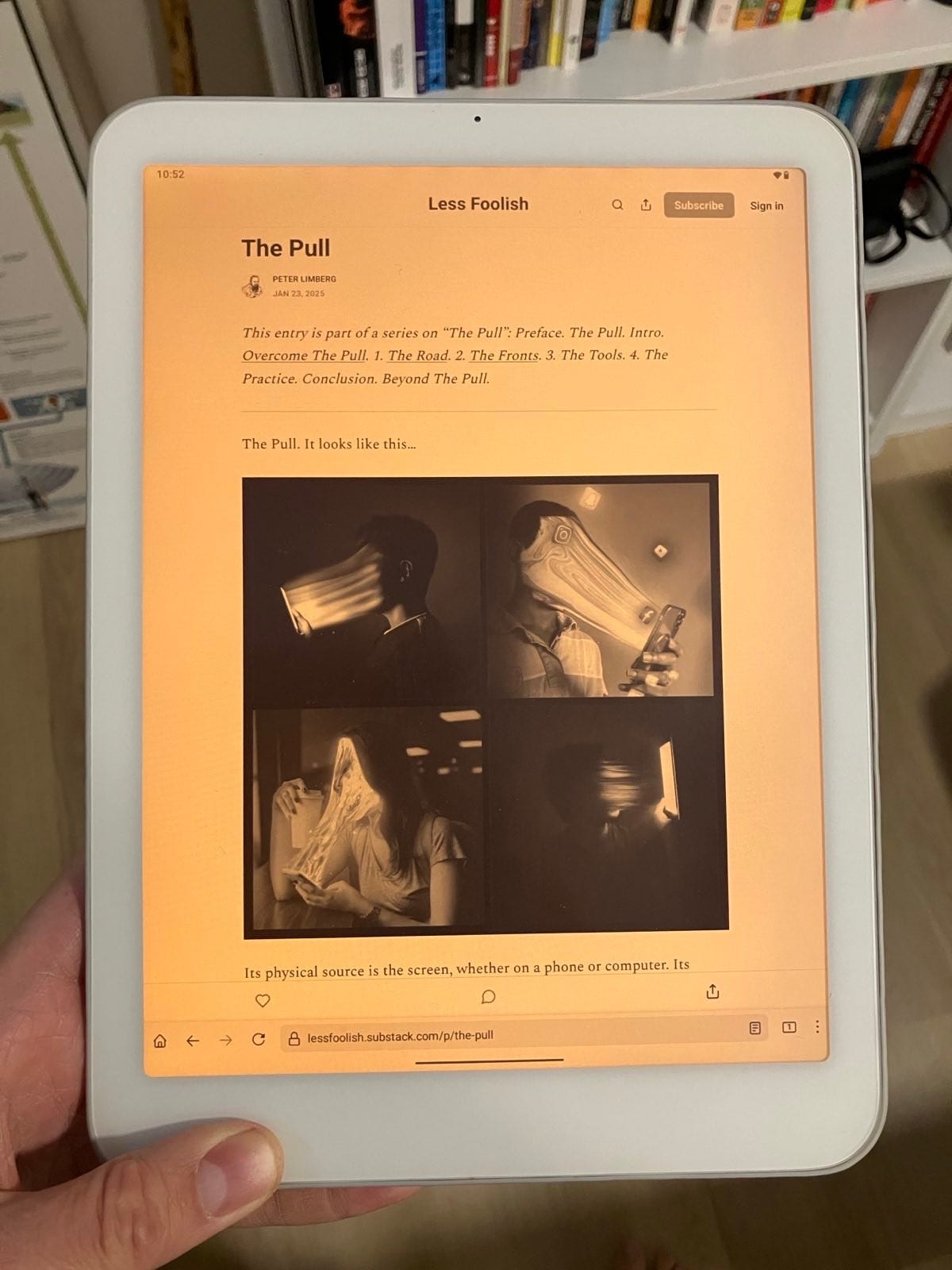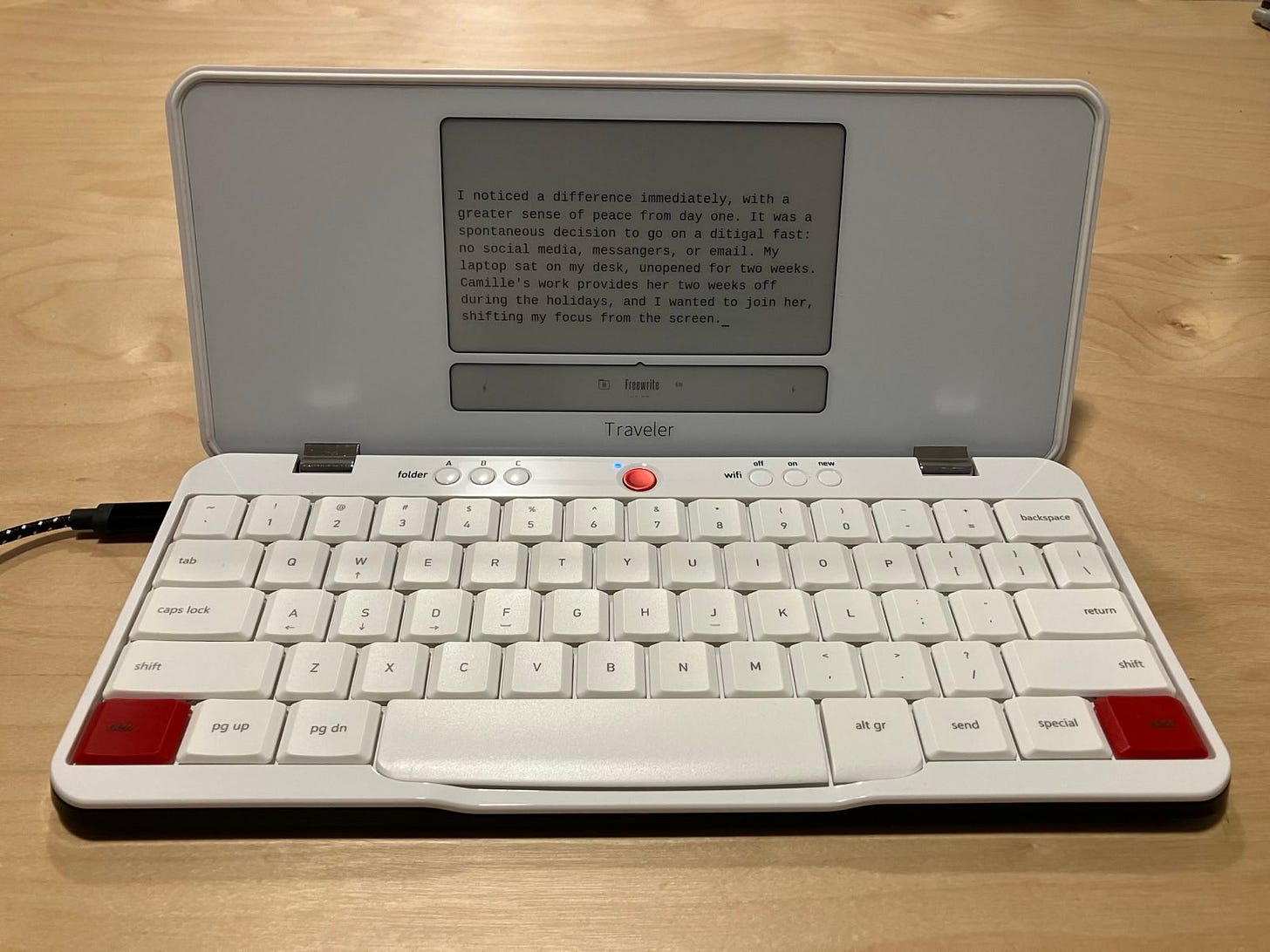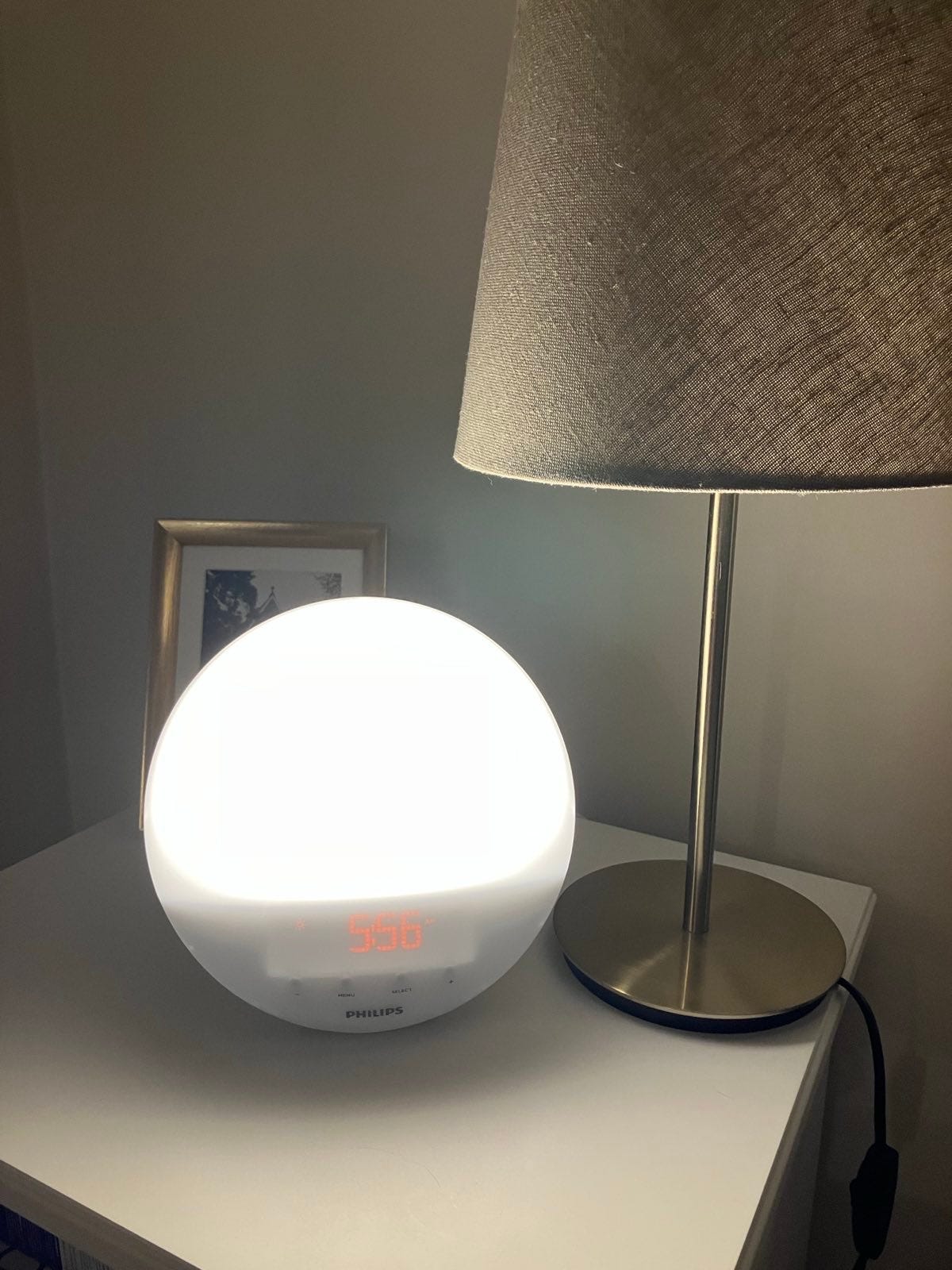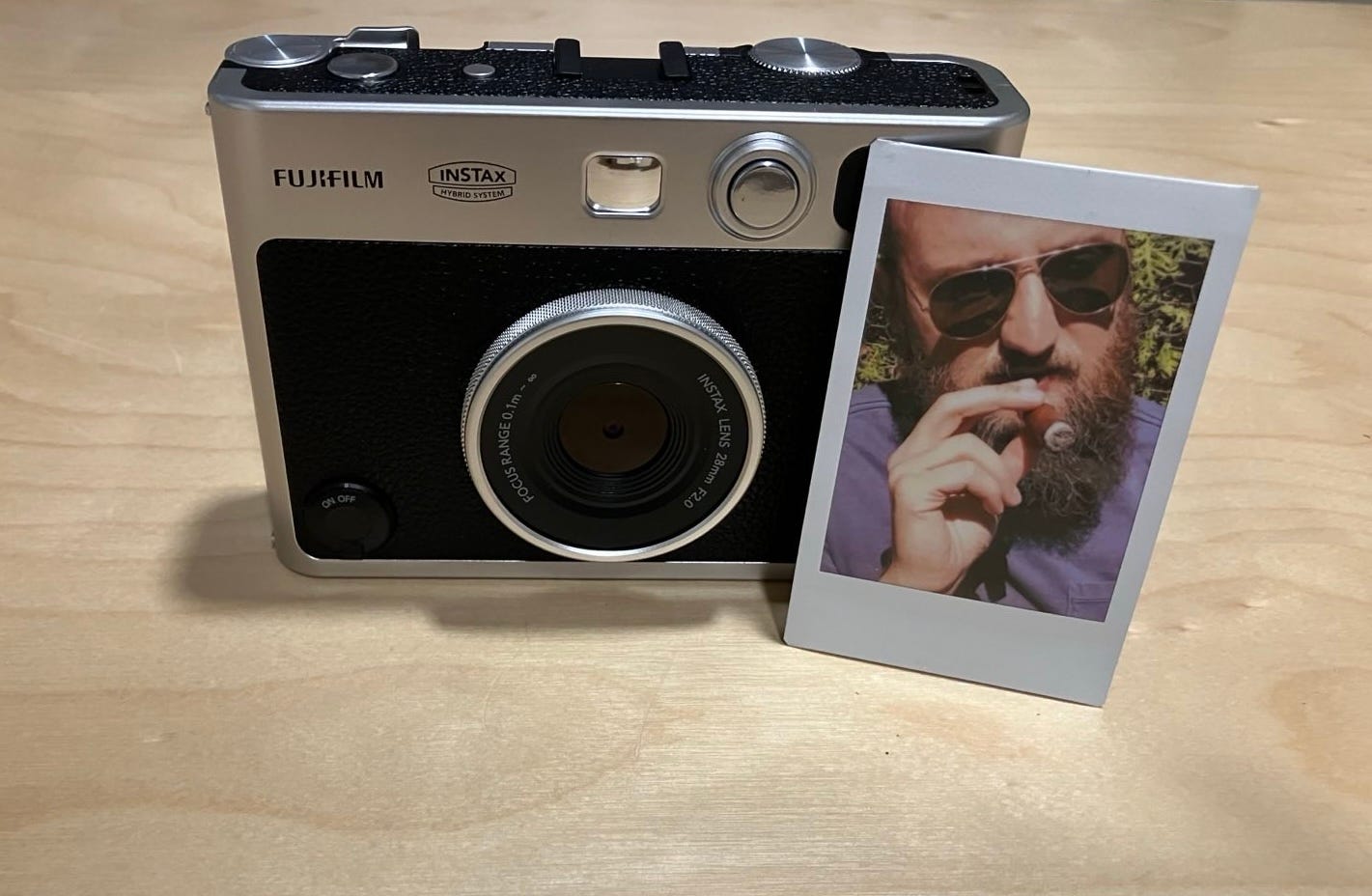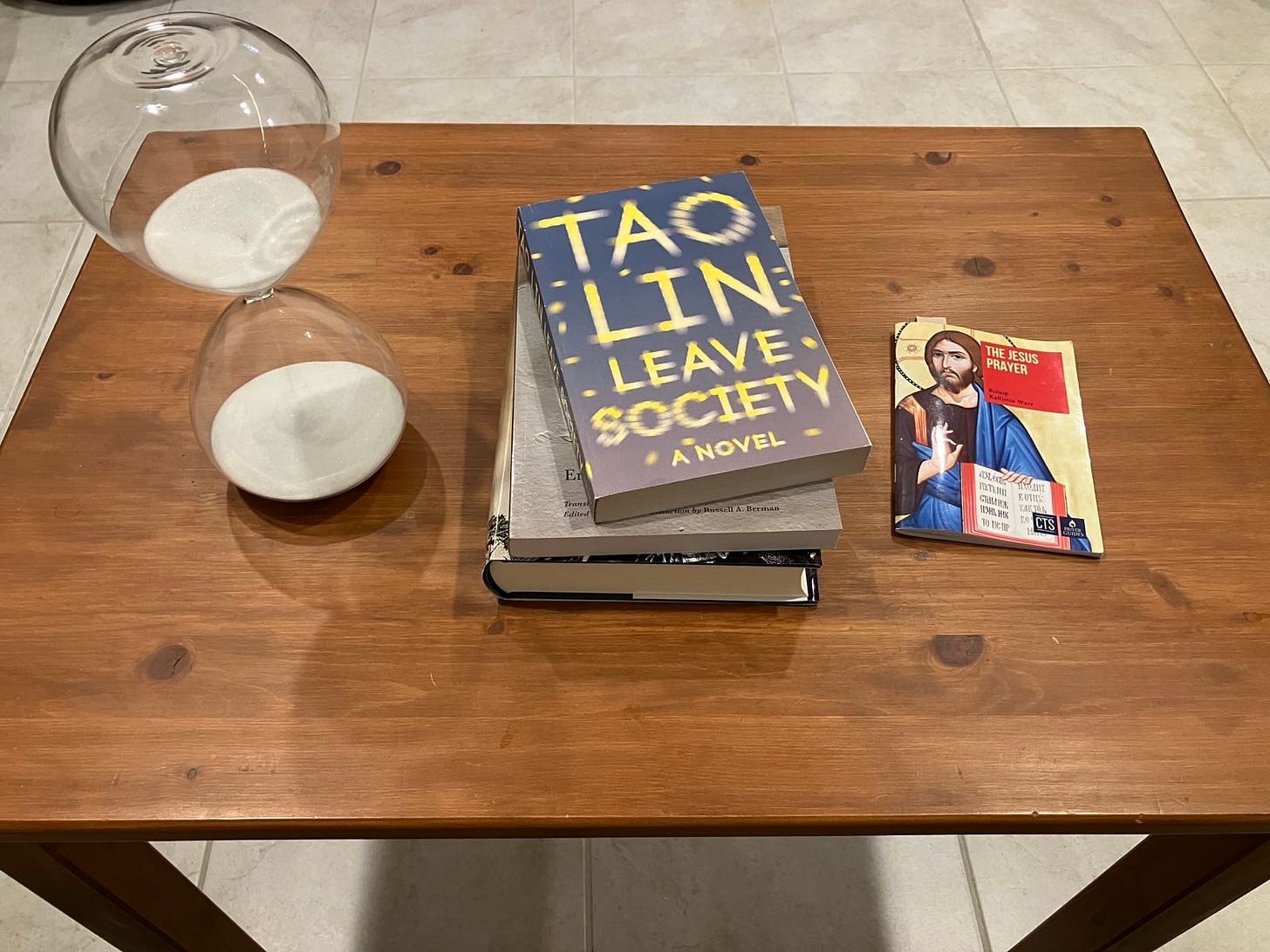The Tools for The Pull
This entry is part of a series on “The Pull”: Preface. The Pull. Intro. Overcome The Pull. 1. The Road. 2. The Fronts. 3. The Tools. 4. The Practice. Conclusion. Beyond The Pull.
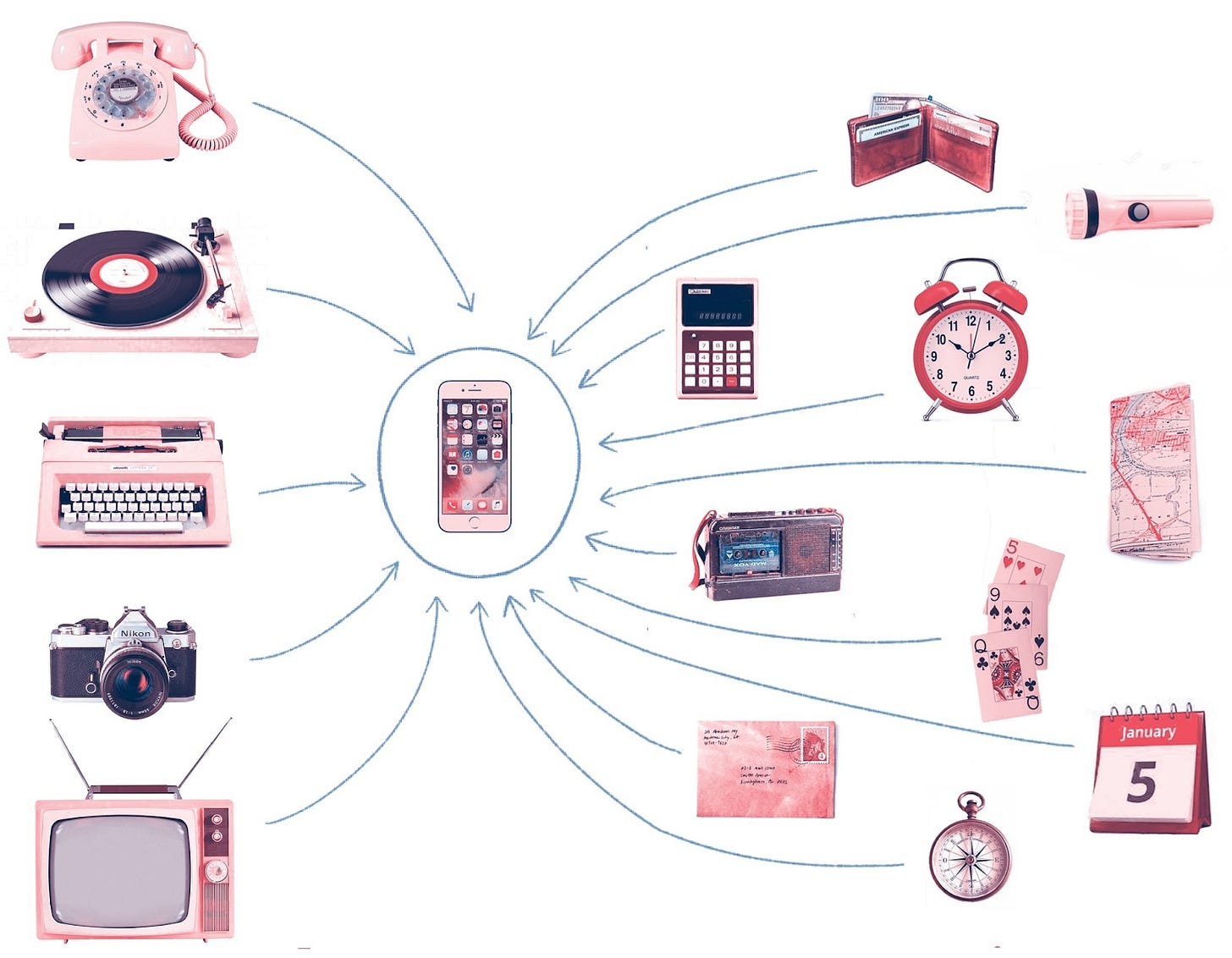
If you are pushing against The Pull while mainly using a smartphone, then you're setting yourself up for a Herculean task. It is an all-purpose device that is not only a phone but also a messenger, email client, camera, calculator, flashlight, alarm clock, GPS, etc.
Even if you implement the majority of the recommended protocols in the previous entry, you’ll keep returning to your smartphone for practical reasons, which risks your being captured by The Pull through the phone’s easy access to the spectacle. As
recommends in her zine guide, you need to “disambiguate the phone.”The smartphone is never just one thing; it’s everything, all the time. The effect of downgrading is to disambiguate these technologies, spreading them across multiple devices so that it becomes possible to focus only on one chosen device at a time, to direct all your attention toward talking on the phone or watching a movie or writing a note or selecting an album. As a result, you’ll find it easier than ever to remain present, to accomplish and enjoy your tasks with minimal distraction along the way.
While the less foolish move is to disambiguate, the foolish one goes in the opposite direction—something the techno-overlords actively promote. This trailer from Apple tells you everything you need to know:
The trailer shows hundreds of years of tools, which created cultural artifacts that made us human, being crushed into a shitty, planned-obsolescence iPad, made using forced labor in China. What fool thought this trailer was a good idea truly amazes me.
Yet, it eerily captures the dystopian future toward which technological “progression” is heading: one device (soon intended to be embedded in your body) that has “everything,” making The Pull impossible to resist.
This timeline can be avoided. While not cheap, it’s a game-changing move to disambiguate the phone (and computer) and purchase single-purpose devices that have very little pulling power. The following are the tools I use:
Punkt
I love my Punkt phone. It looks like a stylish calculator that you can talk on. It has a minimalist design with very few features and an amazing battery life. The best thing about it is that it is incredibly annoying to text on, forcing me to respond to everything with one word.
It has zero pull effect. Sometimes, I grab it impulsively, as if there were some scintillating thing to check, but no—there is nothing, so I put it down right away. I only use it to message Camille and family, and I use messengers (such as Signal) for friends, which I have downloaded on my computer and check along with my email during correspondence time blocks three times a week.
Upon purchasing my dumbphone, it dawned on me how biased society is against them and how reliant I was on all the apps on my smartphone. A mild anxiety flooded through me when considering the following scenarios where I have become accustomed to smartphone use…
How will I find my way around without Google Maps?
How will I get around without Uber?
How will I do HIIT without Seven?
Of course, all of these have answers: buy a standalone GPS (or old-school paper maps!), call a taxi, and write down your exercises with pen and paper while using a physical stopwatch. The promise of convenience offered by the smartphone is what sucks people into The Pull.
You could go cold turkey, but I recommend the slow-discipline approach: swap your SIM card to the dumbphone and apply the AIR Method to your SIM-less smartphone (where the apps still work with wireless connections). Delete all unnecessary apps and slowly wean yourself off the ones you use most often. Make your smartphone useless—then get rid of it or keep it as a backup.
Another dumbphone to consider is the Light Phone II. Or, you can try a new brand of semi-smartphones, such as the Light Phone III, the Minimal Phone, or the Wisephone.
Hard mode bonus: Go phoneless like
does!Daylight
I was the philosopher-in-residence at Daylight Computers last summer and wrote their in-house (and unreleased) Third Timeline manifesto. Thanks to this, I was provided with a Daylight Computer, which I still use daily.
It is a great device, billed as a computer “de-invented,” with the motto: “Have your computer do less so you can do more.” It has a paper-like display similar to a Kindle and a refresh rate comparable to an iPad, without any blue light, and it can be read in daylight. It also has an adaptive brightness feature, with warm amber lighting that is good for reading at night.
I mainly use it for reading articles. In the morning, I read Ground News, an aggregation platform that compares news stories from different political perspectives to combat bias and the problem of echo chambers. In the evening, I read Substack, the platform where the most exciting and interesting new ideas are taking shape.
The Pull can still happen on the Daylight, but to a much lesser degree than on a regular phone or computer. Hence, it still requires the application of the protocols mentioned in the previous entry. For example, the pull of Substack Notes (which I dislike due to its increasing clout-chasing ethos and the status-anxiety-inducing culture forming around it) is much greater than that of the Substack Inbox or Ground News.
Freewrite
Imagine writing with no spellcheckers, thesauruses, AI “centaur thinking,” or access to the world’s recorded knowledge via the internet. Well, people did it—once on a typewriter. Now, they can do it again on a Freewrite.
A Freewrite is a distraction-free writing device designed to remove digital distractions. It combines the feel of a typewriter with cloud-syncing features to encourage deep-focused writing.
There are different Freewrites for different needs. I purchased the Traveler. I am still working on integrating it into my various writing practices, but I love the flow-state potential it provides.
Sunrise Alarm Clock
Are you using your smartphone as an alarm clock? That’s like waking up in the arms of the enemy. By touching your phone in a hypnagogic state and then being tempted to go on “the loop”1 (mindlessly checking texts, email, social media) right away, you condition the entire day to be pullable. Not good.
An easy fix for this is to stop using your phone as an alarm. I recommend investing in a Sunrise Alarm Clock (we use a Philips). It’s a more peaceful way to wake up, with the light gently getting brighter to the sound of chirping birds. Couple this with a morning prayer, and then you’re golden.
INSTAX mini Evo
One downside of replacing a smartphone is losing the handy camera feature. The solution: buy a camera. I recommend the Fujifilm Instax Mini Evo Instant Camera.
It is a hybrid camera, marrying the digital with the analog. You can capture your images, preview them on the LCD screen, and then print them as Polaroid-style photos. You can also save them digitally or even upload photos onto the camera for them to be printed.
Analog is making a comeback for a reason. Taking your Evo to a social gathering and being able to print out instant keepsakes of the best photos of the evening creates the kind of embodied memories that digital photos stored on the cloud simply lack.
Another bonus of having a physical camera is that you’ll take fewer photos. Good. Starve the spectacle. Your life does not need to be meticulously captured.
Bonus: Physical Books !!!
While we have a Kindle, I refuse to read books on a screen now. A book should be considered a physical work on paper, bound together with protective covers. I like to live in a world that keeps it that way. And I love buying books!
If you do not have an oversized “antilibrary” (owned yet unread books), then you’re missing out. Having a vast inventory of books at your disposal is invaluable, allowing you to touch the pages where knowledge is contained.
I recommend purchasing an hourglass to accompany your reading time. I time-block 30–60 minutes of reading and prefer not to have any digital timers nearby. Occasionally glancing at the sand falling creates a visual immediacy with time that digital movements fail to produce.
***
There are other devices we are considering: Garmin GPSMAP, Mighty Vibe, Remarkable, Onyx Boox Mira, etc. In conjunction with physical tools, there are digital tools, such as Metalabel for creative community (“dark forest”) collaborations, Are.na for knowledge collectors (“playlists, but for ideas”), and Web 1.0-esque digital gardens to artfully curate your ideaspace.
Now is the time to be an internet realist and be hopeful about the internet. A humane internet will feel totally different than what we have now. It will be in service of life, and life itself will not be slavishly pulled to feed the spectacle. If we can overcome The Pull, with a little help from the tools listed above, we’ll create new ways of being online together.
If you have any recommendations, questions, insights, feedback, or criticism on this entry or more generally, message me below (I read and respond on Saturdays) …
“I’m the biggest time waster of all. I was having breakfast a few weeks ago with Naval Ravikant, the founder of Angelist. He refers to the ritual of doing all the Internet checks as “the loop.” The loop of checking Twitter, Facebook, emails, blogs, analytics, news, etc. After that breakfast I timed how long my particular loop took. I thought it would be about three or four minutes. It was eighteen minutes. And that didn’t count me responding to anything. And I do that loop about ten times a day. That’s 180 minutes. Three hours! Holy…!” -
, “How Do You Stop Yourself From Wasting Time?”

